In June, DC Comics kicked off the start of its Rebirth initiative. After a wave of criticism surrounding the way they have treated their characters’ rich histories since 2011’s New 52 relaunch, DC has decided to rebrand. They hope that by restoring their characters’ pasts, they will restore readers’ faith in them as well. Do they succeed? That’s what the Comics Beat managing editor Alex Lu and entertainment editor Kyle Pinion are here to discuss. Book by book. Panel by panel.
Note: the reviews below contain **spoilers**. If you want a quick, spoiler-free buy/pass recommendation on the comics in question, check out the bottom of the article for our final verdict.
 Green Lanterns #11
Green Lanterns #11
Writer: Sam Humphries
Penciller: Robson Rocha
Inkers: Jay Leisten & Cam Smith
Colorist: Blond
Letterer: Dave Sharpe
Alex Lu: The last time we talked about Green Lanterns, Kyle, I thought that the series was stuck in a loop. Issue after issue we saw the same character beats reiterated. Green Lantern Jessica has anxiety. Green Lantern Simon feels conflicted about his criminal past. There didn’t seem to be much, if any progress happening over the course of the arc and even though I liked the Red Dawn storyline a little more than you did, I didn’t find it to be particularly innovative. I was surprised to hear you wanted to talk about this issue despite all of that, but I’m glad you did because Green Lanterns #11 is quite an interesting release.
Would I call Green Lanterns #11 a great book? No, I don’t think so. Writer Sam Humphries makes strange dialogue choices throughout the title that imply that he and penciller Robson Rocha are not entirely in sync. This issue focuses on the newly minted Phantom Lantern Frank Laminski’s first outing as a “hero” where he flies to Kansas and saves a boy and his dog from an oncoming tornado. Afterwards, he’s confronted by Simon and Jessica, who accuse him of stealing the phantom ring from them and kidnapping a Guardian of Oa in front of a news crew. The news crew initially sides with Frank, but quickly switches sides when he loses control of the Phantom Ring and his costume changes from green to colorless. The news reporter yells “Maybe he isn’t a real Green Lantern?!” restating a fact that has already been visually portrayed in the panel before it. Green Lanterns is certainly not the first comic to beat its readers over the head with dialogue that seems perfunctory or redundant when juxtaposed alongside its imagery, but it’s a pet peeve of mine and something I consider to be a hokey relic of older, less sophisticated comics. This sort of redundant dialogue appears again and again, even closing the issue when the Phantom Ring turns Frank into an Orange Lantern. We see him in bright orange on a full splash page in the signature color, yet for some reason Humphries has Simon repeat that “the phantom ring is changing him into an Orange Lantern!”
Stylistic issues aside, I do think the Phantom Lantern arc is the most interesting story to come out of this series so far. Issue nine, which focused on introducing us to Frank’s past, gave us a good look at how he ended up becoming the pained and lustful individual that he is presented as here. He’s a complex character in some ways and I have to give Humphries and Rocha respect for that. The role the media plays in this issue is interesting as well as it allows the world at large to weigh in on the way that Simon and Jessica are conducting themselves as representatives of the Green Lantern Corps. Even Batman gets to opine for a second, adding additional weight and dimension to this morality tale. That said, I feel like this story is on rails. Everything from Frank’s contorted facial expressions to his violent acquisition of the Phantom Ring to his partnership with the ghostly Volthoom leads the reader to believe that Frank is a stone-cold villain even though he doesn’t see himself that way. I do think that Humphries and Rocha want us to have some sympathy for the character, as he is not presented as a completely power hungry maniac, but he is so close to total darkness that it’s hard to feel like there’s anything redeemable about him. Even his heroic act is completely selfish in a way that feels a little too overt for my tastes.
Ultimately, my opinion on Green Lanterns #11 has grown slightly more positive, but only just. While the book has given demonstrable development to Simon and Jessica (I particularly enjoy how Jessica’s ring has developed a more human cadence to its speech patterns thanks to her constantly talking to it), a lot of my issues with Humphries’ scripting style are still present. In addition, Rocha’s pencils as inked by Jay Leisten and Cam Smith, while professional, have something of a plasticky action figure feel to them that is not up my alley. I do legitimately feel like there is an audience for this title, so I would give it a browse to see if it floats your boat, but I, unfortunately, continue to abstain from boarding. How about you, Kyle?
Kyle Pinion: As you note Alex, prior to this arc, I really disliked this book. And to be totally clear, I thought the Green Lantern franchise has been ailing for quite some time. It’s funny, most people think that once Geoff Johns left is when the trouble started, but I think really once the movie came out, some sort of weird cosmic realignment happened…and suddenly everything that was GL-related turned to poop. Johns’ writing was never as good as his Sinestro Corps War peak, and the Venditti era that followed was a snooze. The first arcs of both GL titles: Green Lanterns and Hal Jordan and the Green Lantern Corps both struggled to break free from the weight of what came before. The latter tried to restore the central battle between the Green Lanterns and the Sinestro Corps, a solid core to build out from, but Venditti really struggled to make it intriguing beyond a good excuse for Ethan Van Sciver’s appealing character design work. As for Green Lanterns, that title maybe slight had a leg up as it was trying to actively do something different: keeping its ring-wielders earth-bound. Unfortunately, the threat they faced: Artrocitus and the Red Lantern Corps is just a less interesting version of Sinestro’s crew, but more in line with the 90’s extreme aesthetics that the New 52 prided itself on.
Like a miracle, somehow the new arcs of both titles have somewhat started to snap the focus of these books into a place of greater interest. The Hal Jordan title has the Corps facing off against Brainiac while trapped in one of his bottled cities, a set-up so fun that I’m surprised I can’t recall it happening it before. On the other hand, this title has detoured a bit since it left behind the Red Lantern shenanigans and doubled down on its concentration on Simon and Jessica. There was a somewhat touching little issue about Simon’s relationship with his mom, which then segued into this Phantom Lantern storyline. The nice part about this new arc thus far, is that Humphries has spent more time with its villain than he has the two stars of the book. It’s not that I think he does a bad job with either of them, as we stated as the outset of the series, there’s a lot of blank canvas that he could play with to make them both full fleshed-out protagonists, but there’s something about Frank that seems to click better with Humphries style of storytelling. I’m not sure if it’s because he’s a wholly original creation, or if the writer prefers working with more ethically questionable characters, but suddenly I’m much more interested in what he’s up to and how this story is largely coming together.
The Phantom Ring itself is kind of a dopey plot device that still lends itself a little beholden to some pretty tired mythos, but it’s the character it’s attached to that sees the story through for me. Sure, we’ve had asshole Green Lanterns before, Guy Gardner being the most obvious one, but Larry is a bit of a different beast: desperate to be a hero but with none of the selfless qualities that set him apart from Simon and Jessica. He’s a bit like Booster Gold gone way wrong.
This a storyline that still has one foot firmly planted in the past (and I groaned a bit at the idea that he’s changing into an Orange Lanterns) and in a place where the franchise could finally go (earth bound stories, new villains, more personal explorations). It’s certainly not in the upper echelon of Rebirth books (as you said, Humphries’ dialogue tendencies, especially in characters exclaiming every little moment just to make sure everyone playing at home gets it, can really grate), but I’m glad that I finally care enough about a Green Lantern book again to want to find out what happens next. He’s got a couple of cool ideas here, and if he can meld them altogether into a satisfying, which it feels like he’s on the verge of doing, we could finally be looking at a solid Green Lantern comic for the first time in years, or at least one that I’ll even remotely care about.
Also, Rocha’s art seemed to work better for me here. I think when he concentrates on talking heads and active character beats, some stronger work pops up the fore…which is in direct contrast that very Image Revolution stuff he was doing when the comic kicked off. Everything is nearing a point of strength with this title. It’s not enough for me to recommend as a must-read, but given how generally weak the slate was this time around, I probably had the most fun reading it of really any of DC’s releases this week, short of that great Super Powers backup in Cave Carson has a Cybernetic Eye #2.
Final Verdict: Alex recommends a Browse, Kyle a buy
 Aquaman #11
Aquaman #11
Writer: Dan Abnett
Artist: Philippe Briones
Colorist: Gabe Eltaeb
Letterer: Pat Brosseau
Alex: At the start of Aquaman’s Rebirth run, I was not a fan. The first few issues did little to impress me and by the time the first arc with Black Manta came to its climax, I was more or less done with the title. There were hints at a greater premise, but the early issues on this series did not have enough of a hook for me to grab and hold onto. Returning to Aquaman #11 this week, however, I can safely say that that particular problem has been safely resolved.
As far as longform storytelling goes, the buildup to Aquaman #11 has been conducted quite well. The gradual escalation of tension between Aquaman and the surface world has been played up by several writers in the past, but it feels more deliberate and meaningful under Abnett’s carriage. Moving from Black Manta’s personal vendetta to the larger machinations of the N.E.M.O. organization have given the story a widening scope several different perspectives to play from– all of this to the story’s benefit.
Following his fight with the Shaggy Man, Aquaman has been hospitalized but is back in fragile but good graces with an American public that had wanted to crucify him for actions N.E.M.O. had framed him for in the past. This leads to a series of bedside scenes that each have their own flavor. Mera’s conversation with Aquaman is both loving and pained. Mera speaks with a wounded cadence when she asks Aquaman why he didn’t call for her help during the fight with the Shaggy Man but quickly moves to tenderness as she examines Arthur’s wounds which are grossly and excellently illustrated by Philippe Briones. Arthur is all bluster and strength when Mera appears, but when she hugs him he whispers “don’t let go.” That push and pull of emotion is one of the strongest elements of this story. Comparatively, Mera’s and the Justice League’s interactions with Aquaman’s bodyguard Murk add some much-appreciated comic relief while Arthur’s and Mera’s conversation with the Justice League heightens the dramatic tension and further widens the scope of Aquaman’s storyline.
The climax of this issue feels appropriately dramatic to me as N.E.M.O. engages in a land war with America while posing as Atlantis, further besmirching Aquaman’s name in the eyes of the people. It’s a little silly to me that the government and the media would so easily buy that the man who just saved a group of Americans would suddenly turn on them again, but as we’ve learned in recent months, the truth is a lot more fragile than we’d like to believe.
Aquaman #11 showcases a much improved Arthur Curry storyline compared to the ones we discussed earlier in the DC Reborn Round-Ups. It’s hard to believe that was nearly half a year ago, but here we are. What did you think of this issue, Kyle?
Kyle: Abnett’s work on Aquaman has been a bit of a mixed bag, it’s a terribly conservative take on the character with a redux of the old standby “Atlantis wants to go to war with the land-dwellers” storyline, with of course the very wrinkle you describe. But at the same time, there’s a fun stuff happening on the fringes that makes it work just enough.
While I bemoaned Arthur and Mera suddenly not being married in the rebooting of their characters, I have to admit that Abnett has found a couple of neat angles to shine a light on some actual drama for why their being together might be a bad idea. I’m rather infatuated with this prophecy that surrounds Mera’s marrying Arthur and the doom it may bring to Atlantis and everyone else. On top of that, we just came out of an issue where Arthur fought the Shaggy Man for crying out loud! And this new version of Black Jack and the N.E.M.O. organization intrigue enough, that I’m willing to grant that 75% of my troubles with this run have come down to fill-in art constantly disrupting the visual flow of the story. It’s like watching a movie and a completely different cinematographer and set designer come in every 20 minutes.
While Briones isn’t quite up to Brad Walker’s level, whenever he pops up, I feel like I get a sense of this being the book that Abnett originally signed up for and he and Walker do the best justice to his scripts – work that I think is, in places, some of his best in years. I found the stretch of pages with Arthur in the hospital to be especially inspired, addressing the earlier concerns he had about his place in the Justice League, while also underlining the inherent fortitude of this character and just why he stands apart. I’m also a sucker for news-based talking heads that kick off any story, which never fails to add a bit of gravity – Abnett and Briones’ approach to recapping the previous battle, with quick flashback panels and a sparing dialogue, was welcome to see.
Again, I don’t love the Atlantis vs. the rest of the world closing, regardless of who is pulling the strings, but at least I won’t have to buy a bunch of issues of Justice League to see this one play out. And also, I still really dig the Kirby-like designs on The Deluge. This is a fun meat and potatoes Aquaman comic, it’s hit and miss, like a lot of the mid-tier Rebirth can be, but I can’t help but keep reading it and think it’s really hitting a nice groove with this second arc; a promising trend for a few of these titles that I had some trouble with at their respective outsets. Now excuse me, I have to go to bed…it’s 1:30 am and I have a 8 am flight to catch to get me the heck out of Jacksonville, FL. Oh work travel, you never combine well with my comics writing time.
Final Verdict: Buy


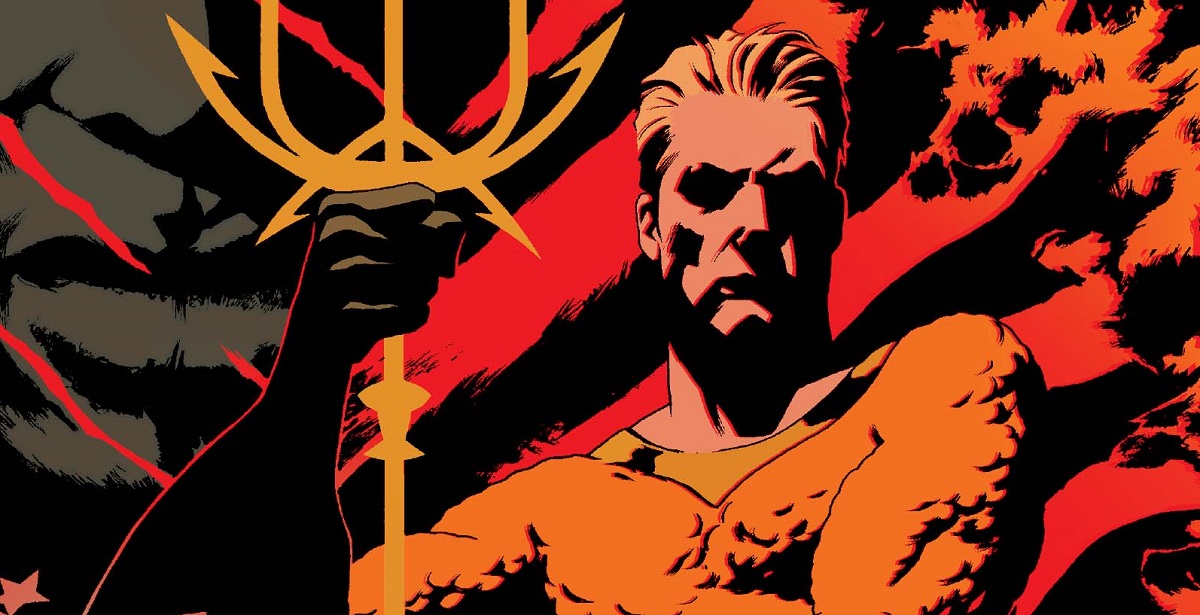
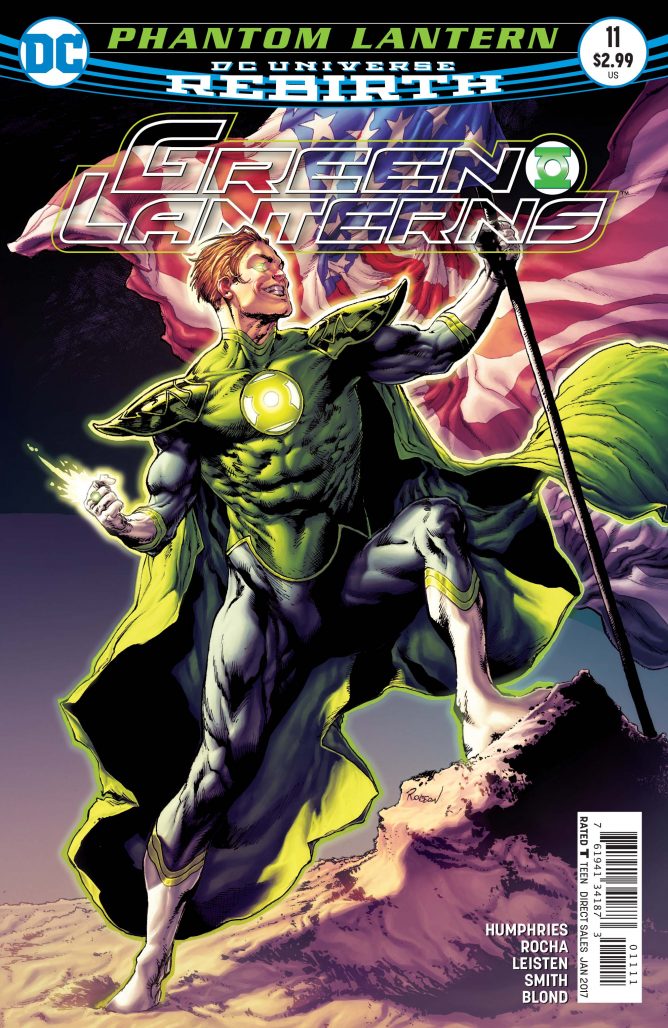 Green Lanterns #11
Green Lanterns #11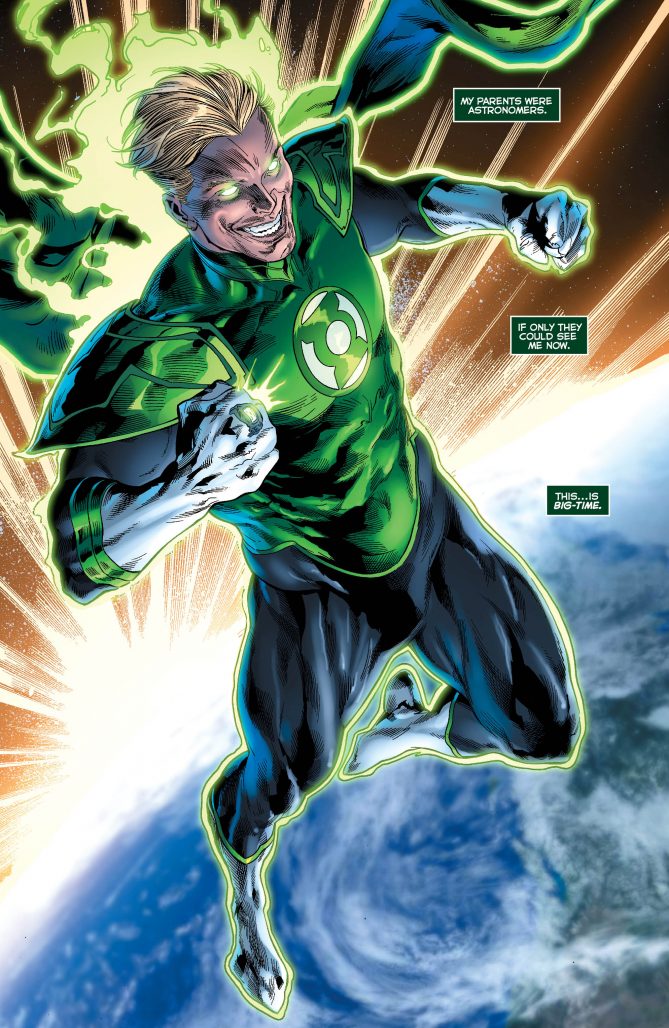
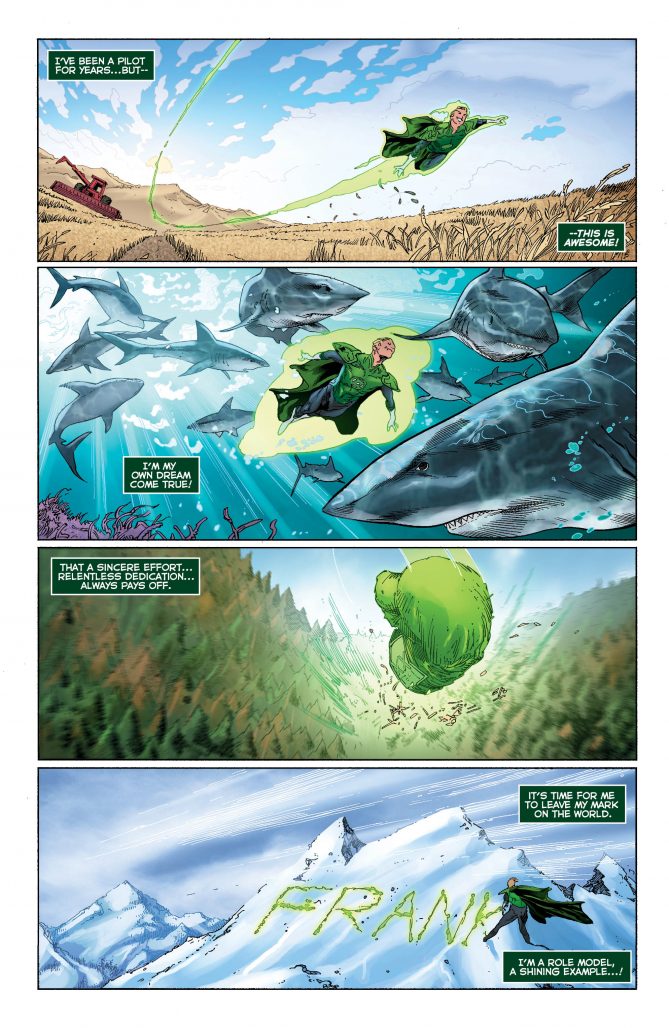
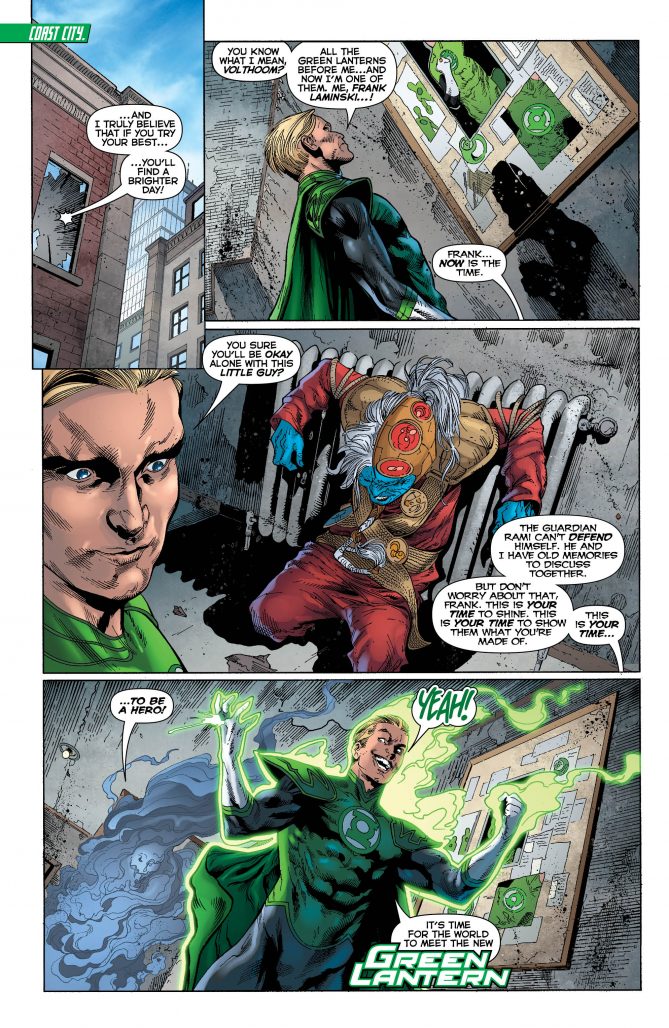
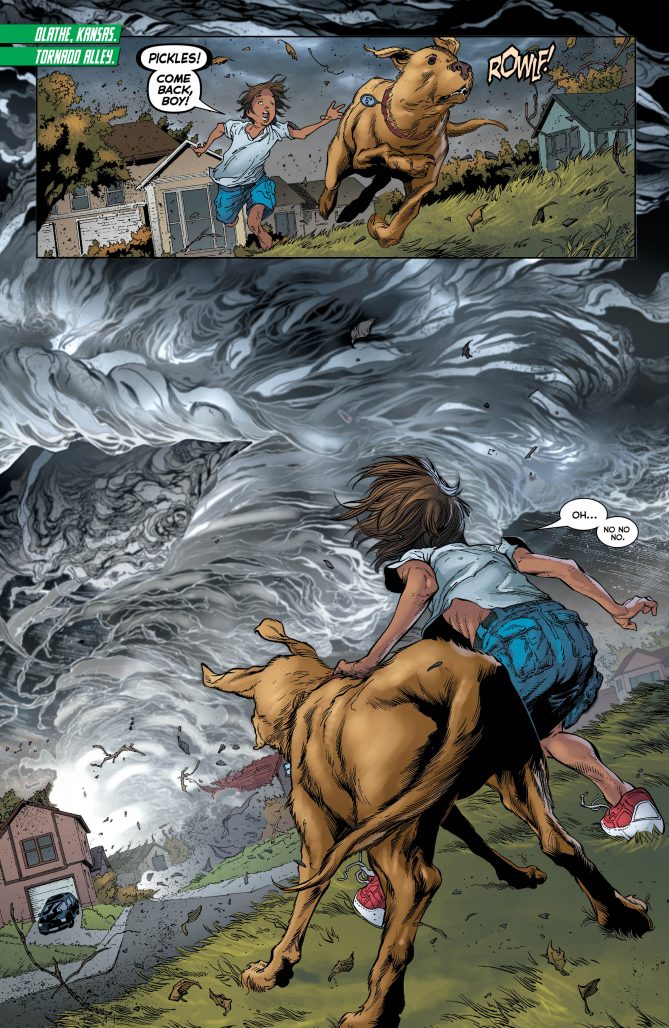
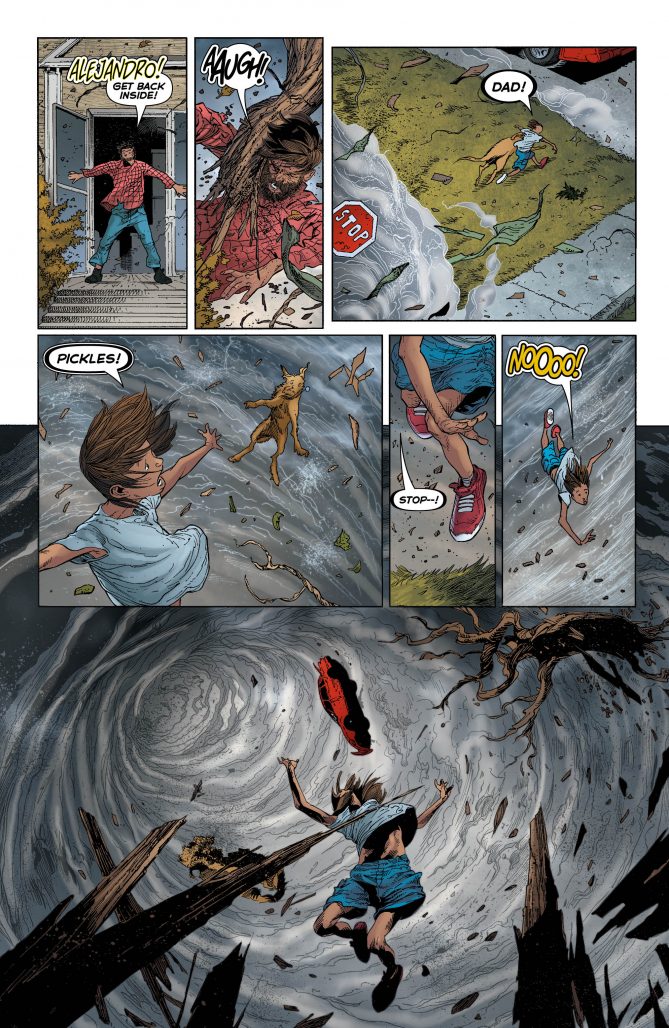
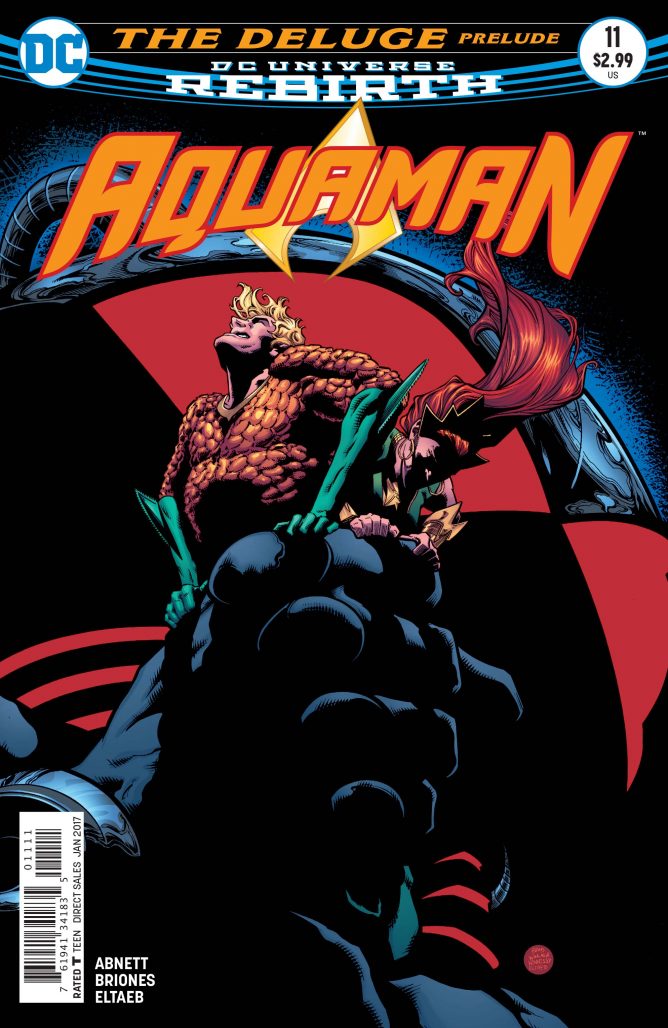
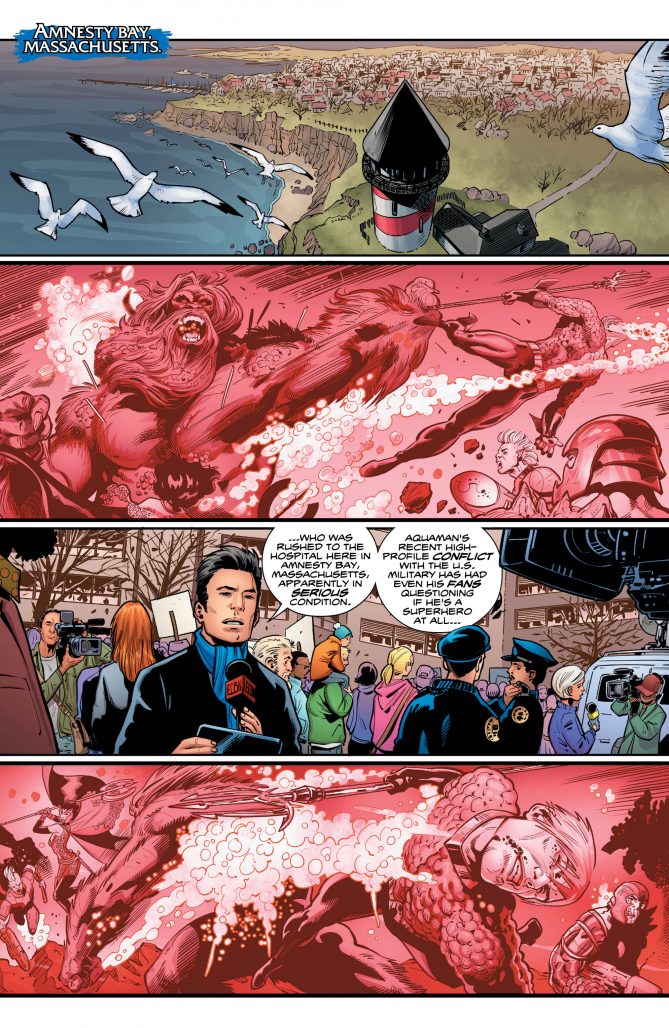
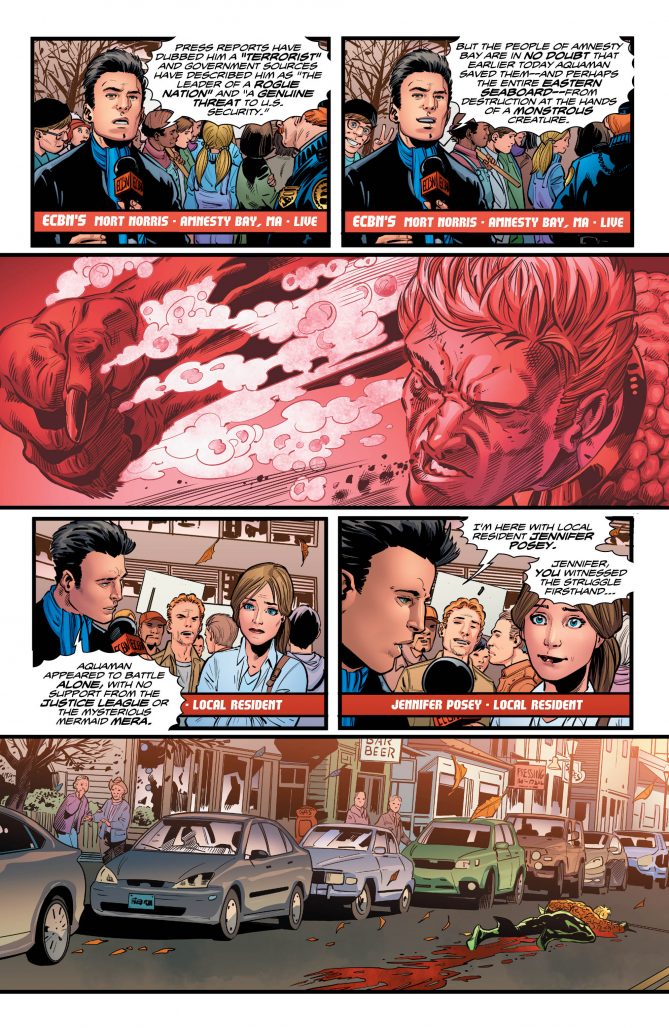
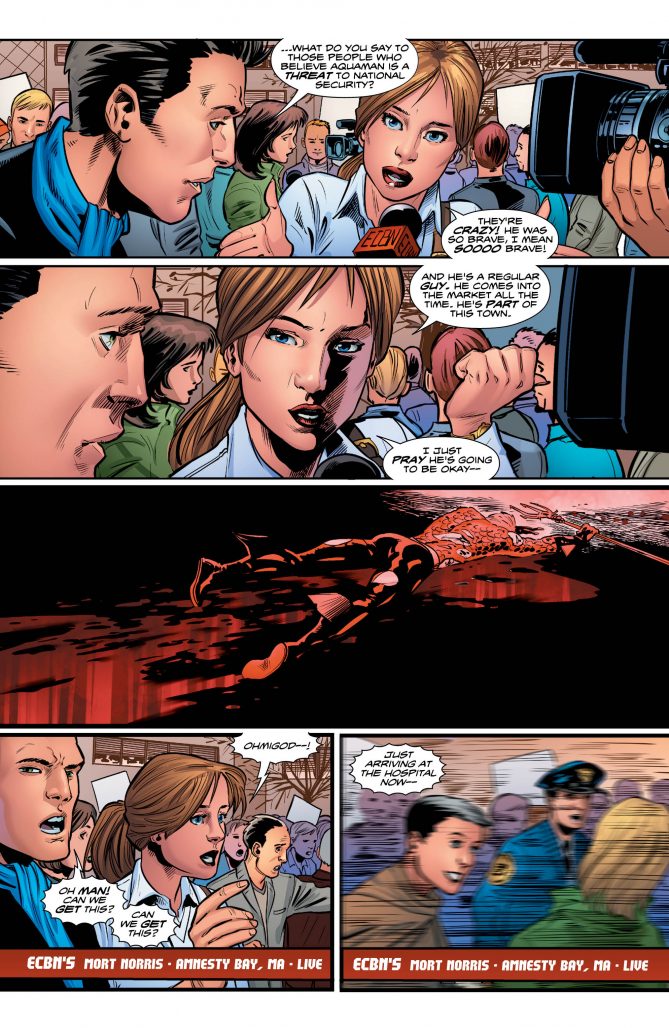
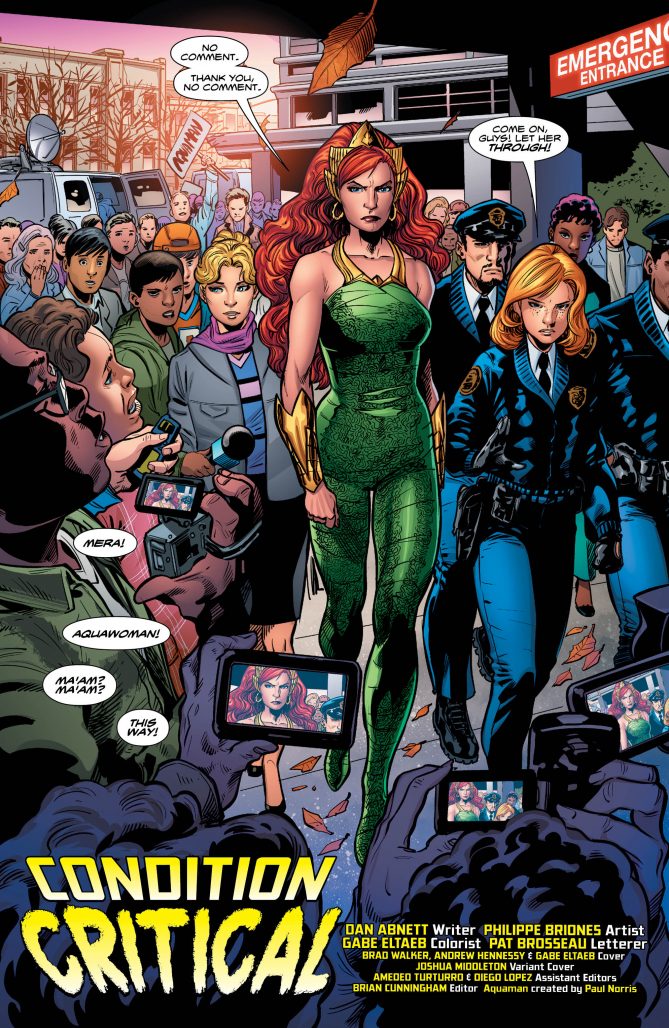






Thoughts on the other books that came out this week? I enjoyed Superman and Nightwing. Batman was interesting, to say the least. It definitely has me hooked, but the next couple of issues will really make or break this arc.
I thought Batman and Superman were both solid, but I think Superman’s lead-in to the Super Sons series was maybe a bit over-extended – one issue would have been plenty. I maintain that Batman is doing the most enjoyable Suicide Squad story of Rebirth, and these past few issues have been a big improvement on the initial arc (which was good, but a little oddly shaped).
Nightwing has this really heart-warming vibe that I’m digging these past two issues. There’s a bit of compare-contrast between his relationship with Bruce and that with Clark (even if it’s not HIS Clark). Fun series!
Cyborg, Justice League, Green Arrow were all fine. Cave Carson continues to be a neat little excursion into some of my favorite weird heroes, especially when taken hand-in-hand with the Scioli backup. I could read 100 issues of that.
Yeah Young Animal has been the perfect complement to Rebirth, with Rebirth doing a back-to-basics approach with superhero stories to take advantage of its lore, and Young Animal providing a more alternative take with less focus on continuity and more of genre experimentation.
Comments are closed.